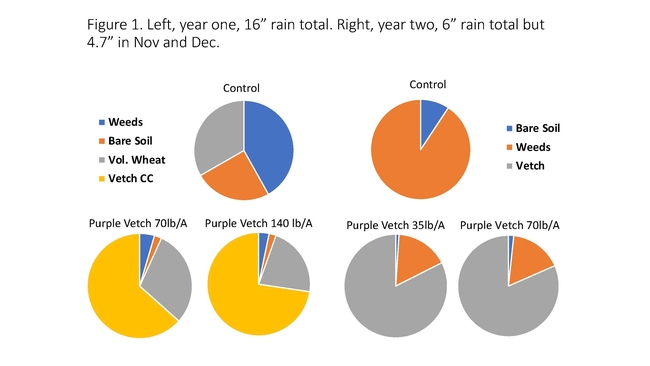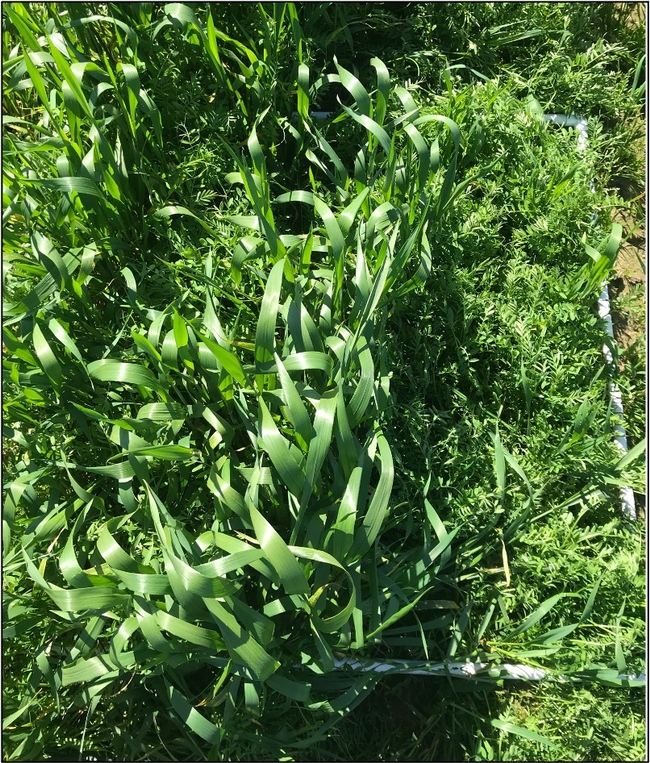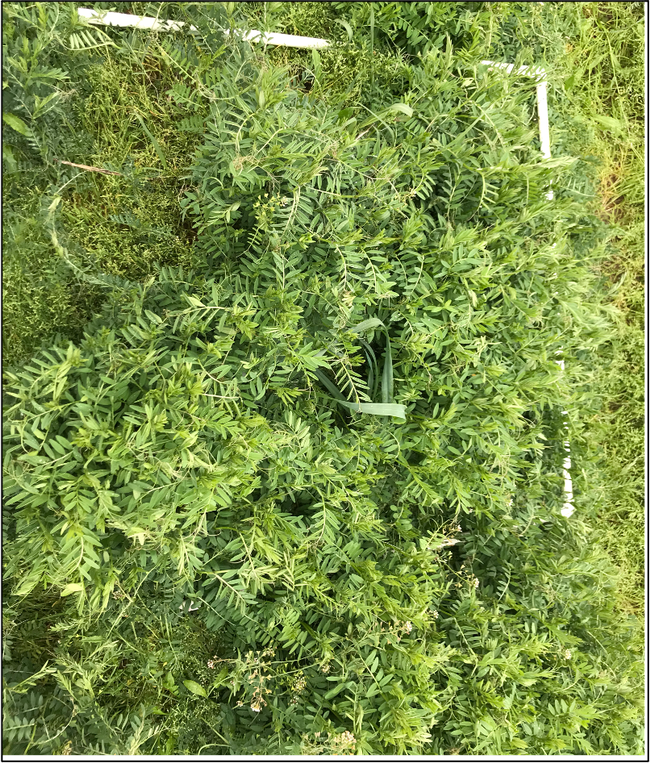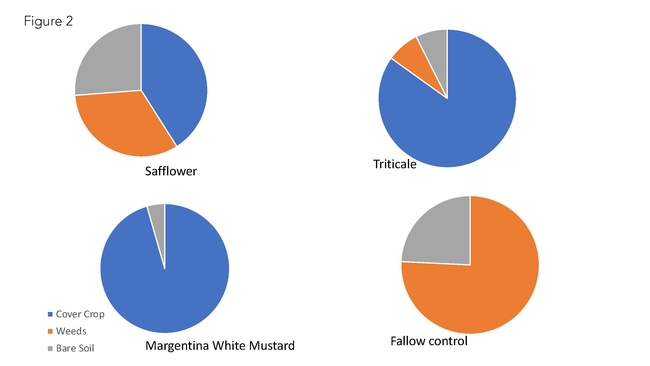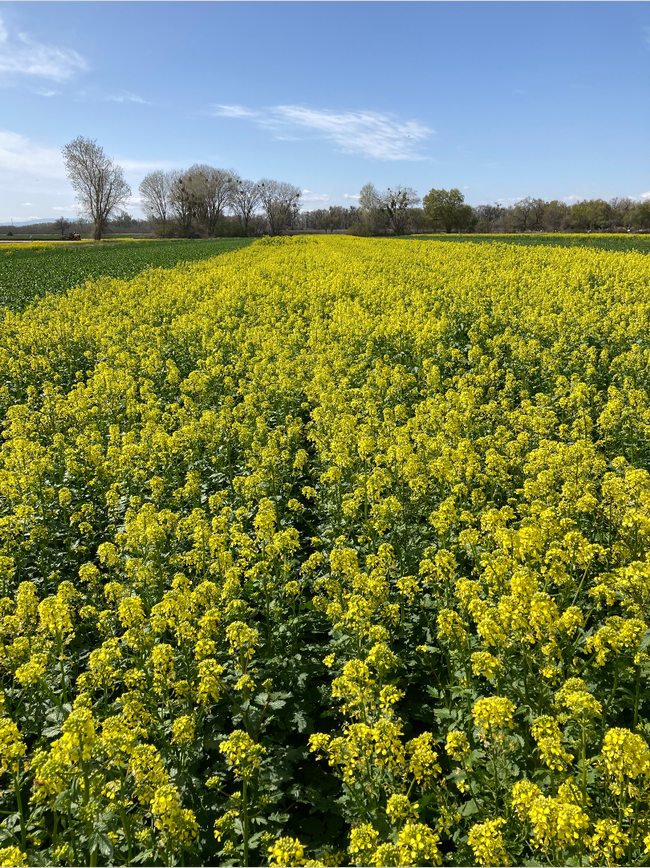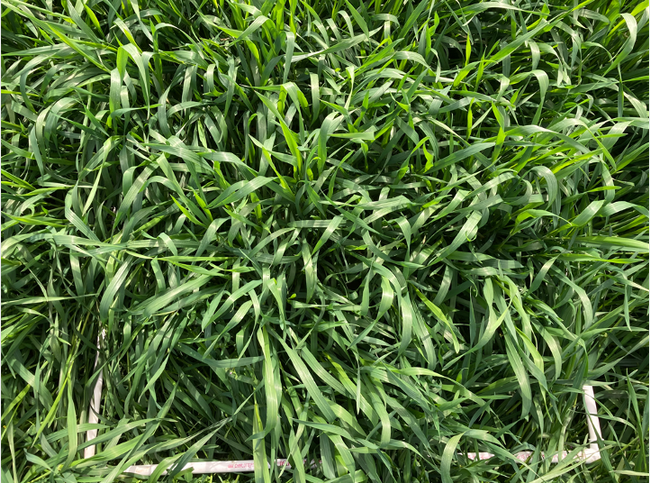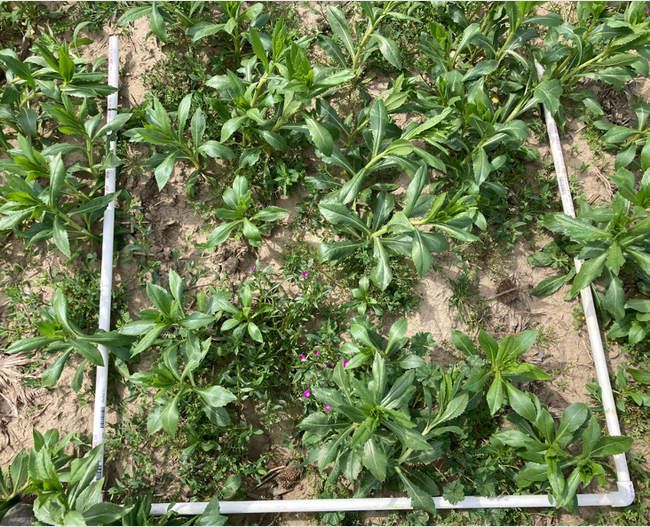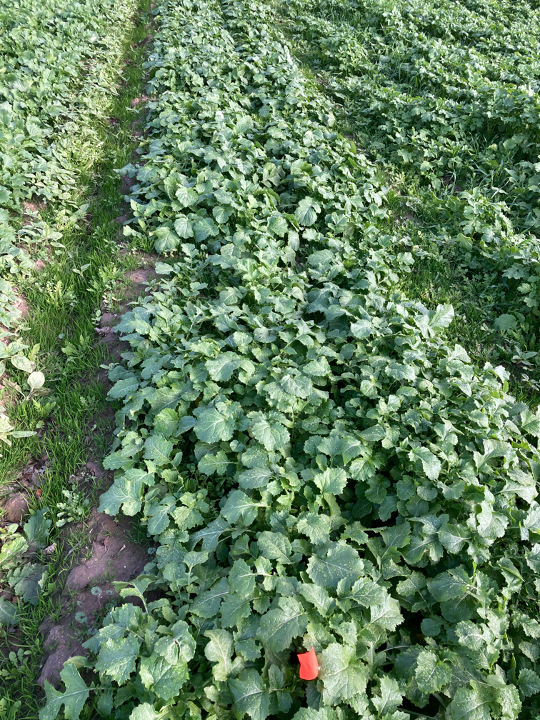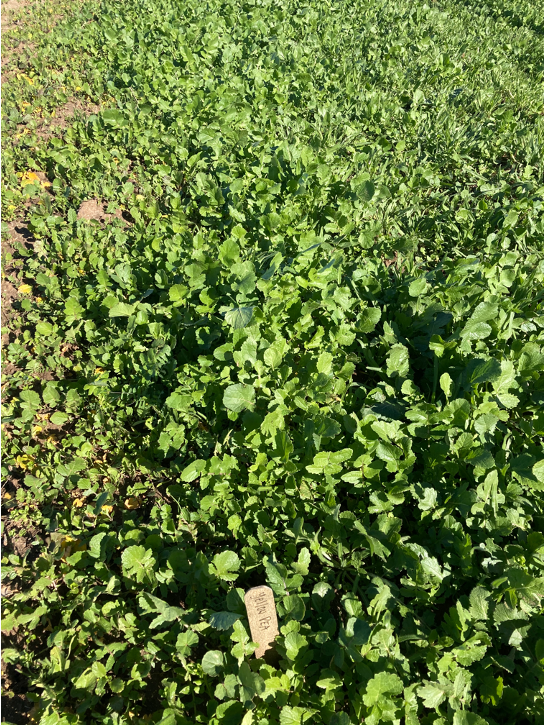Cover crops are typically planted in ground that is otherwise fallow. In an annual crop rotation in the Sacramento Valley, cover crops are commonly planted in the fall, grown over the winter, and terminated in late winter/early spring. Thus, cover crops can take up space outcompeting winter weeds. Cover crops have to establish well to be competitive, otherwise there will be room for weeds to grow. Establishment and significant cover crop growth can be challenging in a drought year. This article presents some of the considerations for weed management based on observations from various cover crop trials in the Sacramento Valley. In addition to weed reduction, cover crops provide a range of other soil health benefits and management considerations that will not be discussed in this article.
Some of the benefits of cover cropping including increased water infiltration, reduced runoff, and increased organic matter can be achieved by leaving winter weeds uncontrolled in the field. However, this can lead to increased weed pressure in the long term if the weeds go to seed and are introduced into the field. An acre of weeds allowed to go to seed can attribute millions of non-desirable seeds to the soil seed bank which can live for a few years up to a few decades. Cover crops can prevent weeds from growing and producing seeds. Some growers report up a savings of up to $65/acre in material, gas, and labor costs from not applying a winter herbicide spray. This does not include the cover crop management costs.
Wet vs dry years, and an early planting date:
Competition with weeds can be maximized by planting cover crops early, before the first fall rain. Cover crop seeds can be planted as soon as groundwork is done in the fall. The seeds can sit in the dry field and wait for the first rain, thus planting does not have to be timed in advance of a rain forecast. Early planting will allow cover crops to take advantage of all precipitation for the season and to get a head start in canopy development ahead of weeds. Planting early also allows cover crops to take advantage of the longer fall days, as their growth slows during the short, cold, winter days.
In two years of data from a trial on a silt loam soil in the Sacramento Valley, a drill-seeded vetch cover crop was able to effectively suppress weeds in both a wet (2018-2019) and dry year (2019-2020) (Figure 1, pictures 1 and 2). In year one, it rained 16 inches between November and March when the cover crop was in the ground. In addition, the field had come out of wheat and there was a lot of volunteer wheat in the field that acted like a cover crop mix with the vetch. The vetch and wheat combined were very effective at outcompeting weeds and providing soil coverage. In year two, seeding rates were cut in half from the previous year. It was a very dry year, with a total of only 6 inches of precipitation during the cover crop season. However, of those 6 inches, 4.7 inches of rainfall occurred in November and December. There was no volunteer wheat in year two, and despite the lower seeding rate, this early season precipitation enabled the vetch cover crop to thrive, and out compete weeds, even though the rest of the winter was very dry.


If you cannot plant before the first rain you can kill the weeds that emerge after the first rain before planting the cover crop. If needed mechanical cultivation or an application of herbicide without residual activity (like glyphosate) can be used to kill the weeds. This additional work is costly but needed to achieve weed suppression with cover crops, otherwise emerged weeds can be prolific. Irrigation at planting can also give the cover crop a competitive advantage, though prioritization of water for cover crops is unlikely given our current water situation.
Plant Family:
In fall of 2020 replicated research plots were established and the weed suppressing ability of white mustard, triticale, safflower, was compared to a fallow control. The mustard and triticale were the most effective at outcompeting weeds (Figure 2, pictures 3 and 4) despite very low early season precipitation (a little more than one inch of precipitation from the fall to the end of the year). Safflower was relatively ineffective at suppressing weed in this trial (picture 5).



In addition, small plots were planted of various cover crop species in 7 locations in the Sacramento Valley. It was hard to get consistent seeding with the single plot planter as it was a very dry year, leading to poor emergence for many species. However, across all sites, brassicas were consistently the most competitive cover crop (picture 6) at suppressing weeds closely followed by grasses. Legumes were less competitive with weeds because they did not close canopy as fast allowing weeds to take hold (picture 7). Legume growth accelerates as days get longer in late winter, providing an opening for weeds to flourish in the colder winter months before the legume has closed canopy. It can be difficult for legumes to catch up later in the season if weed pressure is heavy. Full results for this more extensive small plot trial can be found on the Sutter-Yuba Field Crops Cooperative Extension website.


Fluke years, and considerations for when things go wrong:
During one project year, fallow control plots were maintained free of winter weeds with a mix of several herbicides. Treatment plots that had the cover crop in them were not sprayed with this tank mix as the cover crops were actively growing. Cover crop plots were sprayed with glyphosate in early March to terminate the cover crop stand, and then the field was chopped. However, there was common mallow in the field that was growing within the cover crop stands. As common mallow is not very susceptible to glyphosate, young mallow plants continued to grow after application. The field was planted into sunflower, which has very limited broadleaf herbicide options. The cover cropped areas of the field had to then be hand weeded to remove the glyphosate tolerant mallow. In the cover cropped plots there was significantly more mallow than in the fallow control plots and the grower estimated hand weeding costs to be about $80/acre in those portions of the field. Glyphosate can be effective as a chemical termination for cover crops, but care should be taken if there is a history of tolerant or resistant weeds in the field. Cover crop management, like all farm management practices, need to be adjusted according to the field history, cropping system and year.
Summary and final considerations:
When managing winter cover crops for weed control, a few key considerations must be kept in mind. The history of the field and the existing weed pressure will play a big role in how many weeds germinate and develop in the field. Successful and robust cover crop stand establishment is key for success as cover crops must outcompete weeds in order to effectively suppress them. Thus, planting before the first rain to ensure rapidly canopy development can help. Legumes generally are less effective at suppressing weeds when there is heavy weed pressure in a field. However, a mix with small grains (even volunteers) and legumes may be effective as the small grains can reduce early season weed pressure as the legume is taking off. Finally, cover crops (particularly brassica family like mustards) can become weeds in the field if they set seed. Some growers, especially organic growers, have stayed away from brassicas for this reason. Cover crops should be terminated before they set viable seed to avoid creating more weed pressure in the future. If timely cover crop termination is not an option for whatever reason (weather, equipment access, timing, cover crops are in a mix and actively growing), a high mow can be effective at cutting off flowers or seed heads from brassicas before they become viable. Termination can be delayed to a later date without risk of introducing new weeds to the field.
Though cover crop management, like all farm operations, may be variable from year to year, and expected challenges may arise, winter cover crops are generally effective at suppressing winter weeds and bring other additional benefits to the field.
Thank you to the CDFA Healthy Soils Program for funding this research and to our grower collaborators, without whom the work would not be possible.
This article was originally published in the July 2022 edition of the Sacramento Valley Field Crops Newsletter: https://cesutter.ucanr.edu/SacramentoValleyFieldCrops/Agronomy_Newsletter
